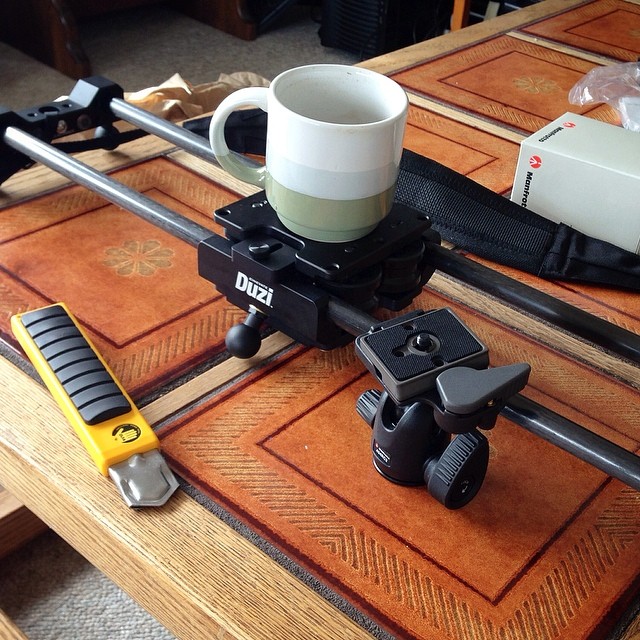Cinevate Duzi Camera Slider Preview
/For a guy who loves a moving camera it's anybody's guess as to why it's taken me this long to purchase a slider. But that day has arrived with the Cinevate Duzi. After a few days of shopping around and deliberation I ordered the Duzi and 3 days later it showed up on my doorstep as I was enjoying my morning coffee. Even though it ships from Thunder Bay, it came surprisingly fast.
A slider is akin to a dolly in that it allows the camera to move smoothly left/right or forward/backward while filming. The Duzi is only 24" long but it is capable of adding just enough movement to enhance an otherwise ordinary shot.
I LOVE being able to move the camera during filming which is why I use the Glidecam so often. With the slider the camera can move even steadier over a shorter distance and the movement can be slow and subtle, which is difficult to pull off with the Glidecam.
Coming in at $399 plus any of the bells and whistles that go with it (all-terrain legs, carrying case, sling, etc.) plus a head to attach the camera onto, this was an easy decision to make. The Kessler CineSlider comparably is $1099 and is 3' or 5' long. For a quick setup and the ability to grab 'n go quickly, the Duzi appears to be simpler and more convenient.
Now I get to take it out and play. The weather's good for trying out some exterior shots and there are a few shoots coming up that the Duzi will come in handy on.
Stay tuned for more shots and notes on how well it works out.



